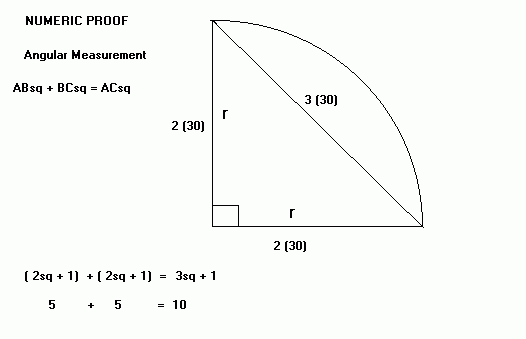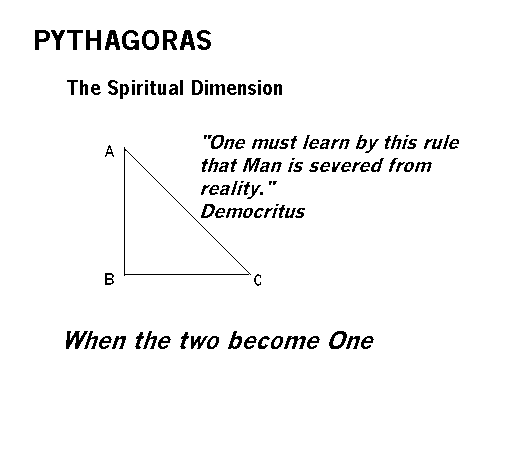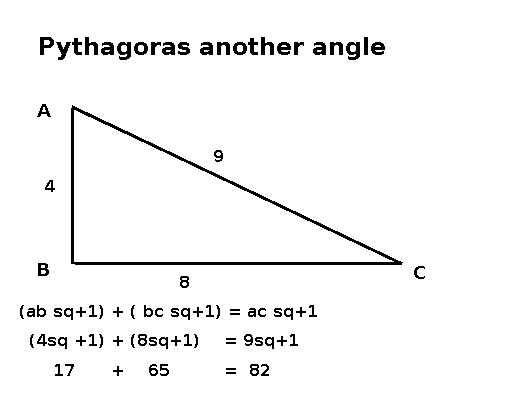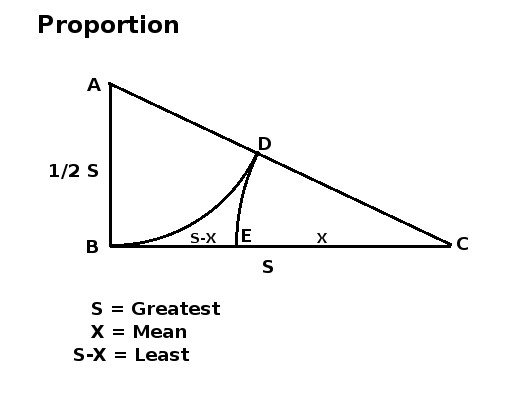|
The Pythagorean Theorem (Making it real) " Rest
satisfied with doing well, Pythagoras " (iv) The discovery of irrationals.
This is certainly attributed to the Pythagoreans
but it does seem unlikely to have been due to
Pythagoras himself This went against
Pythagoras's philosophy the all things are
numbers, since by a number he meant the ratio of
two whole numbers. However, because of his belief
that all things are numbers it would be a natural
task to try to prove that the hypotenuse of an
isosceles right angled triangle had a length
corresponding to a number."
School of Mathematics and Statistics University of St Andrews, Scotland
Introduction
The purpose of this short
message is to make it clear that the side and
the diagonal of a square are commensurable.This
means that we can use a square to show that:
AB sq + BC sq = AC sq (equation) There is no need to skew a
triangle in order to put numerical values to the
three sides. More important is that it shows
there is no need for irrational numbers. The
length of the side of a square is 12/17.
Rational numbers can fill in all the gaps
fabricated by irrational man.
The diagrams are self
explanatory, the addition of one after each side
is squared, is to give substance to the surface
area. Without this addition the surface areas
will only be two dimensional, a meaningless
abstraction, a superficial area. (ABsq+1) + (BCsq+1) //
(ACsq+1) Without any practical value, mathematics becomes a senseless exercise in futility.
|
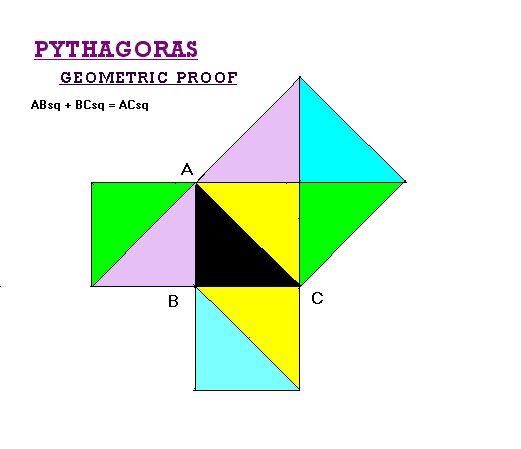
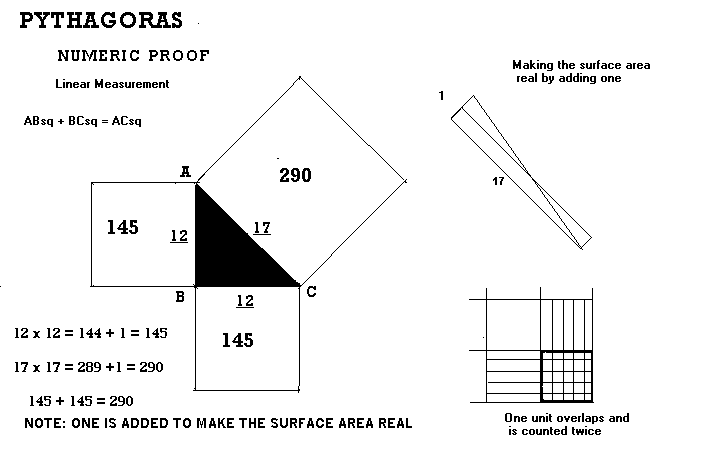
| Note:
The slanted surface area is greater than the
superficial area, however, when the
surface area is made even, by means of a
wedge, it becomes equal to the superficial
area. The difference is that it now has
substance(depth), and is known as a surface area.
|
